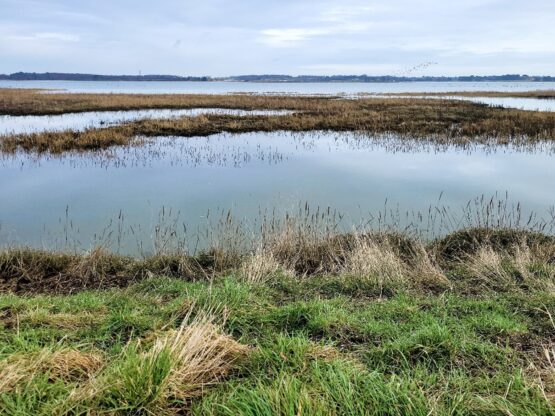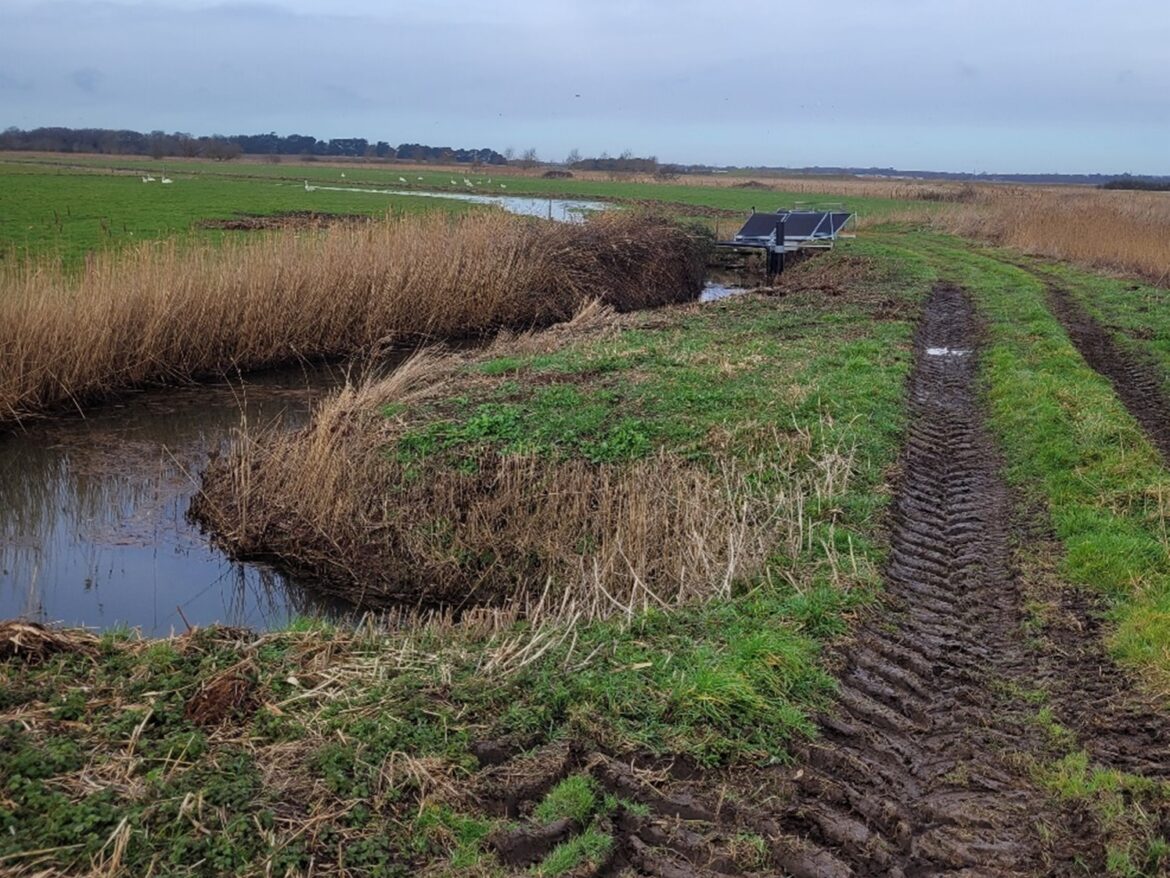Farming in Protected Landscapes Case Study:
Enhancement of Marshes at Iken

For Year 4 of the Farming in Protected Landscapes programme, £19,200 was awarded to Iken Hall Farms for enhancement of marshes at Iken Hall Farm for breeding waders and wintering wildfowl.
The grasslands are grazed by cattle in spring and summer, which helps to keep the grasses short enough for wading chicks to feed in the muddy areas. Culverts give the cattle access across the marshes.
What work was done?
A new solar powered pump was installed on the marshes by the estuary at Iken. This, along with new pipework, is directing water along and within a series of ditches and footdrains. This will create areas of wet grassland and mud in the spring which will provide an abundant food supply for wader chicks.
The solar pump provides an environmentally friendly way for the land to be kept wet enough. The pump redirects water from the river back onto the land, without it the water would just drain down to the estuary. Keeping the grassland wet also helps the land store carbon so it makes our landscape more resilient to climate change.
Why was this work needed?
Grazing marshes are known for attracting internationally important numbers of breeding waders every year throughout the Suffolk Broads and along the Suffolk coastal area. However, Lapwing and Redshank, sadly continue to decline, due in large part, to the limited availability of crucial protein rich-invertebrate food for foraging chicks in the breeding season.
This important food source is concentrated in the wet mud, which is revealed as the water level recedes in linear footdrains. A combination of easily accessible and abundant food source helps chicks forage effectively, growing stronger and healthier quicker, in turn, making them more alert when danger approaches. Without this resource, the chicks would not have enough food.
What impact is this project having?
Just a week after the installation, in February 2025 the landowners have found that the water levels are already at their optimum. This is perfect timing for the breeding season which starts in March. The area along the northern edge of the marshes is a SSSI (Alde-Ore Estuary) that is known to hold nationally important numbers of wildfowl and waders.
The estuary is also a RAMSAR site and an SPA for its wintering feeding and breeding habitats so the Iken grasslands are a really important location, creating a connected corridor for wading birds to breed.

